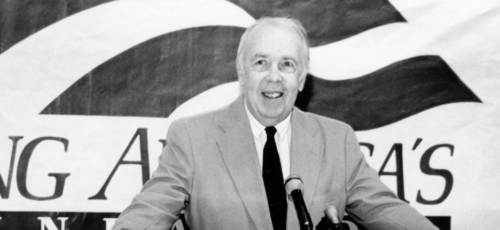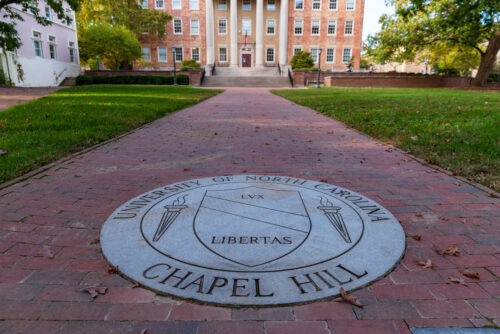The lesson of this debacle is a timeless one for philanthropy—ask the poor what they want, don’t just give them what you think they should have.
It’s common for celebrities wanting to build their brands to do something charitable. So Brad Pitt, after the devastation caused by Hurricane Katrina in 2005, didn’t just send money to New Orleans; he created the Make It Right foundation in 2007 and vowed to build homes in New Orleans. His foundation ended up raising $26 million and built 109 homes in the poverty-stricken Lower Ninth Ward.
Long-time Lower Ninth Ward resident Gloria Guy told the New Republic in 2013 that most politicians did nothing to help the poor in New Orleans, and Prince Charles flew over the ward in a helicopter and refused to land. “The only person who came through here and worked with the people,” she said, “was Brad Pitt.”
The houses formed a small neighborhood and attracted many visitors, in part because such superstar architects as Frank Gehry and Sir David Adjaye planned the houses.
But now the lawsuits have started.
In June a mold-infested house on Derbigny Street built by Make It Right was torn down. A video shot by New Orleans Times-Picayune reporter Doug McCash shows the destruction.
“Where is Mr. Pitt?” resident Doris Wyman asked as the Derbigny Street residence was being torn down. “I wonder, if he saw that house, what would be the first words out of his mouth?”
In September, two Lower Ninth Ward residents sued Brad Pitt and Make It Right and hoped to turn their lawsuit into a class-action suit. Lloyd Francis and Jennifer Decuir charged that Make It Right used shoddy materials in building their homes, and when residents complained, they were told that repairs would only be made if they signed nondisclosure agreements that also required disputes to be subject to binding arbitration. They said residents weren’t being told what rights they were signing away with these documents. They also noted that in their 2013 Form 990, Make It Right had said it spent $4.3 million on “warranty and repair liabilities.”
Make It Right first responded by suing the architect of record, John C. Williams. Make It Right claimed that Williams had been paid $4 million by them over the years. Williams said he donated his time for two years, and “to now be confronted with this baseless lawsuit is shocking and insulting and we intend to prove we were not at fault.”
The most recent development took place last month, when lawyers representing Brad Pitt asked him to be removed from the lawsuit. Pitt’s lawyers say that Pitt shouldn’t be blamed for the home construction and shouldn’t be held responsible for fraud. Pitt has not made a public comment about Make It Right since 2015. On the Make It Right website, a June 2015 statement from Pitt said “We will keep building as long as we have families who need help and donors who believe in our work.”
Part of the problem is that these homes aren’t just ordinary homes. They have solar panels. They use environmentally friendly paint and a form of concrete that environmentalists like called “pervious concrete.” The Make It Right lists in great detail every product they used.
But the homeowners suing Make it Right say that one product the builders used was TimberSIL, a form of wood that wasn’t chemically treated. They say that 36 of the 109 homes had rotting decks that had to be replaced because TimberSIL didn’t work in New Orleans’s humid climate. Other homeowners say that the architects who designed their homes used flat roofs, which do little to protect houses against relentless rain.
The thing is that while residents of the Lower Ninth Ward were happy to have Brad Pitt’s help, no one asked for ultra-fancy homes made from pervious concrete and designed by Sir David Adjaye, famous for building the National Museum of African American History and Culture. They just want sturdy places to live.
Laura Paul of the group Lower Nine told the New Republic, “We don’t do Platinum LEED certified, Frank Gehry has not designed a single home for us and never will, but we put 60 families back into their homes.” Their total, according to their website, is now up to 87, and Lower Nine’s budget is a fraction of Make It Right’s.
Meanwhile, it’s not clear how many people still work for Make It Right. An NBC News investigation in September found that Make It Right closed its offices in downtown New Orleans and its staff of less than six was based in a trailer in the Lower Ninth Ward. NBC did get a statement from Brad Pitt through a spokesperson where Pitt said, “I have total faith on our team on the ground to see this through.”
Brad Pitt’s charitable commitment is admirable. But surely it would have been better to have asked the residents of the Lower Ninth Ward what sorts of homes they wanted instead of giving them what they thought they deserved?
The lesson of the Make it Right debacle is a timeless one for philanthropy—ask the poor what they want, don't just give them what you think they should have.
(Hat tip: Nonprofit Quarterly)







An investigation conducted by Wilfred Chan in THE GUARDIAN in February 2022 found that the Make it Right homes had furthrr deteriorated in the past three years. Chan was unable to make contact with Make it Right and does not believe the nonprofit still exists. No one answers the office phone. Their website is now blank.
Chan interviewed University of Illinois geographer Judith Keller, who has surveyed the Make it Right homes, Keller believes that only six of the homes are still structurally sound, with the remainder subject to massive repairs that homeowners can’t afford.
Brad Pitt tried to remove himself from the lawsuit some homeowners have filed against Make It Right, saying that he was not responsible for designing or building the homes But in October 2019 Judge Rachael Johnson blocked Pitt’s request and he remains a defendant.
I think what make – it – right- did and is doing is wonderful – I would ask homeowners to remember that regular maintenance is a part of any homeowners responsibility – – thank you Brad Pitt and all involved for reaching out to help people in need – Brad Pitt did not do this for spotlight – he doesn’t have to – he shines his own light –
Did these people pay to have there homes
Built. This is unreal talk about buying the hand that feeds you. Some people are so ungrateful. Why don’t you find out if there’s a warranty on the the building materials .Call the companies let them know that there material is junk and sue them not Brad Pitt.This is pretty sad if you ask me.
A piece by Kaitlin Menza in ARCHITECTURAL DIGEST notes that in 2015 Make It Right sued the manufacturer of TimberSIL for $500,000, which they said was the cost of replacing decks in 39 homes where the wood rotted. The case was settled in 2017 on terms that remain undisclosed, Menza reports.
Mr. Ragan, according to his LinkedIn profile, served as director of development and government relations for Make It Right from 2009-17.
He is right that I should not have made assumptions about what homeowners wanted when they held discussions with Make It Right in 2007-08. He says, in an email exchange we have had, that people who attended charettes Make it Right held said they wanted contemporary design in their homes. He said that Brad Pitt was an active part of the discussions at that time.
I asked him for evidence, preferably from reporters covering Make it Right construction at the time. He failed to provide any evidence, particularly that plans were altered in response to suggestions from tenants.
I also note that I did not find any evidence from the articles I read and linked to that people living in Make It Right homes liked their homes. It could be that most Make It Right homeowners are a satisfied silent majority. But if that is the case, why is Make It Right suing the architect who was responsible for the construction of the homes?
I hope to do a followup post at some point and I hope I find that the problems with Make it Right homes have been resolved.
There are certainly problems with some of the homes that Make It Right built and the 36 porches that were built with TimberSIL ( a product that offered a lifetime warranty). And, there are many important lessons about philanthropy and nonprofit management to be gained from Make It Right’s experience. But Mr. Wooster didn’t do his homework in this case.
He claims that the problem is that no one “asked for ultra fancy homes…designed by David Adjaye” and that they simply didn’t listen to local residents.
Make It Right did listen to local residents, conducting numerous local charettes and community forums prior and after initial design of the homes. (A number of which Brad Pitt attended and participated in.) Homeowners did want energy efficient, healthy and safe homes. And each homeowner selected the specific design; no design was built unless it was selected by a homeowner. They were proud to live in a green neighborhood and enjoyed the greatly reduced energy bills.
Mr. Wooster is right that there are lessons to be learned from this story, just not the ones that he notes. Unfortunately, he falls victim to a bias that poor families don’t necessarily value energy efficiency or design just like the rest of us.
There are many important lessons from Make It Right’s experience about board governance and oversight, management best practices, and the dangers of treating a nonprofit like a personal foundation. But I guess it’s easier just easier to add an uniformed (and incorrect) opinion alongside a photo of Brad Pitt than explore the real issues.